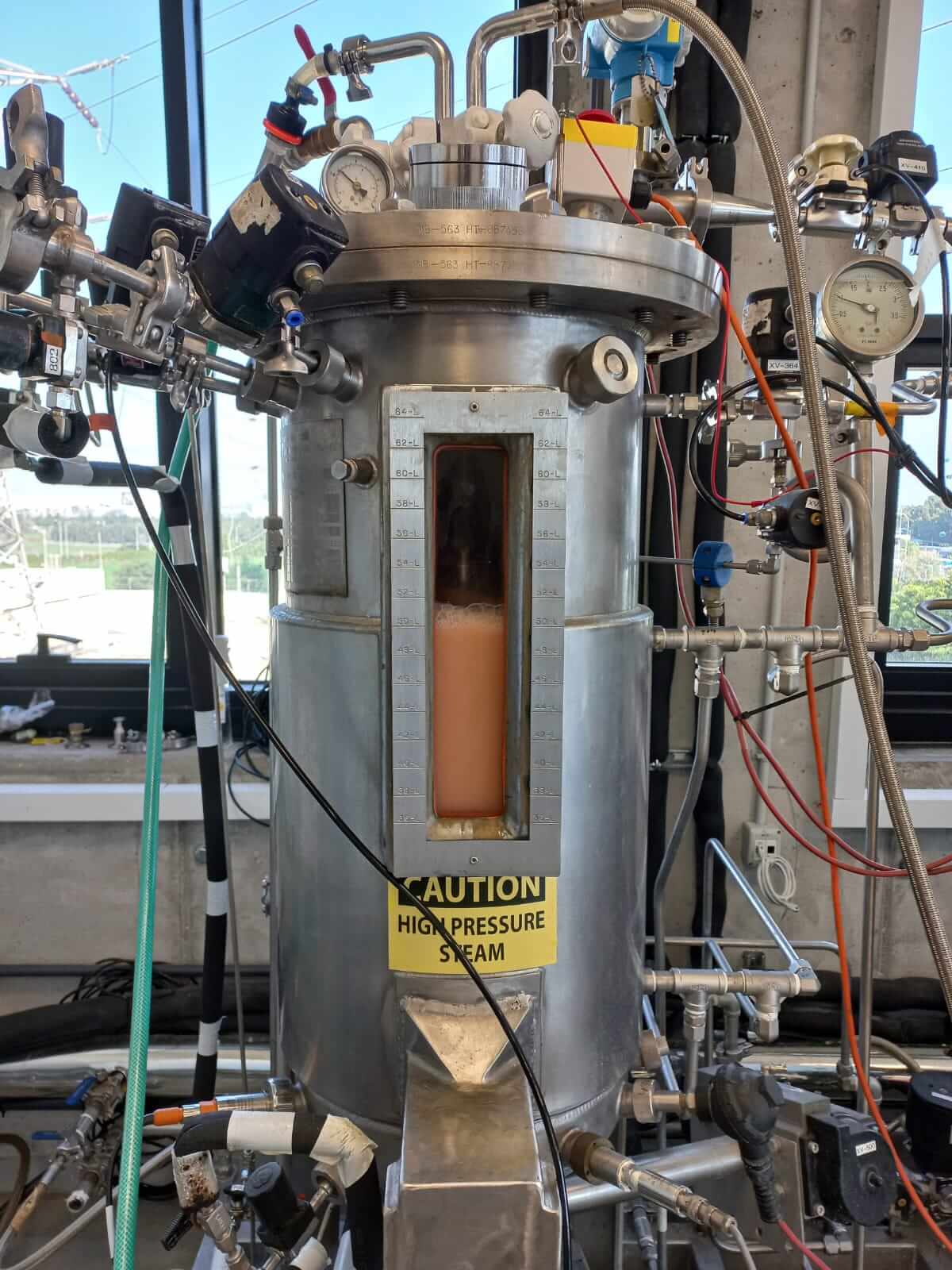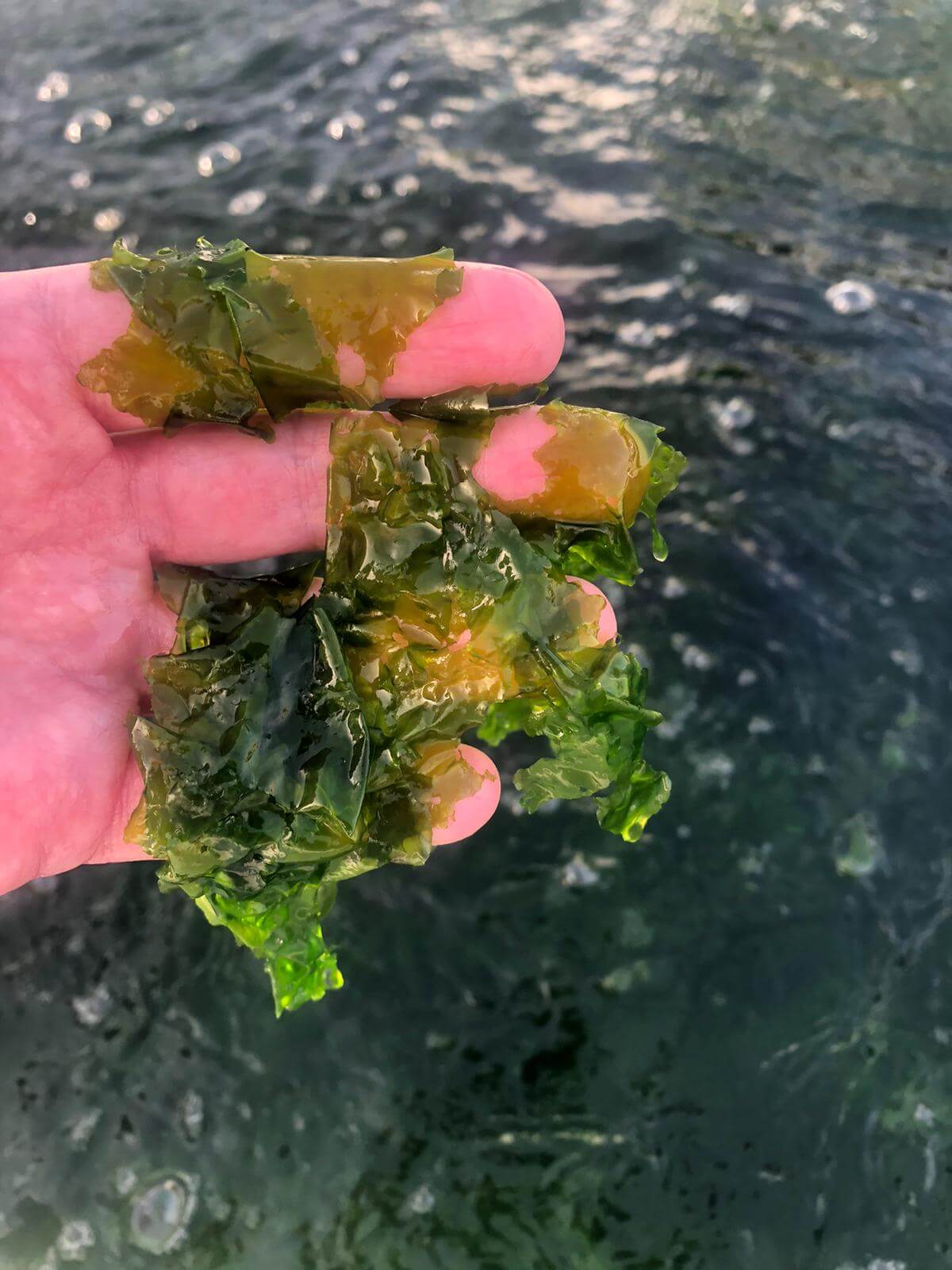An Israeli company recently introduced a new environmental and biodegradable substitute for plastic - algae. Is this a real solution to the problem of plastic waste?
By Yonatan Sher, Angle - Science and Technology News Agencybiba

Great news for the planet - the tax on the disposable has brought for a drop of 50 Percentage of the purchase of disposable tools in the marketing chains, according to a publication of the Ministry of Environmental Protection. But what if you lived in a world where the amount of single-use plastic you consume didn't really matter, because instead of accumulating all over nature, and disintegrating over hundreds or thousands of years into microscopic particles that harm the health of Animals And possibly even of humans, every plastic product you threw in the trash would turn into carbon and water within a few months? This is the dream presented last week by the Israeli company Biotic at the international conference "Rethinking Materials", which took place in London.
Despite the improvement reported following the new tax in Israel, plastic waste is still a significant global problem. as per A report submitted to the UN, of the approximately 9.2 billion tons of plastic produced since 1950, at least 7 billion tons have become waste that accumulates in the natural environment, in the oceans, on the highest mountain tops and even in the fruits we eat. "Normal" plastic is produced from polluting fossil fuels (today the plastic industry consumes about 8 percent of world oil) and decomposes only slowly and partially.
However, in recent years, efforts have been increasing to find more environmentally friendly alternatives, and to produce bioplastics: plastic substitutes from biodegradable materials that are produced from plants and by microscopic creatures. The two most common types of bioplastics in use today are PLA and PHA. The PLA is produced from sugar that is extracted from crops such as corn or sugar cane, and PHA is produced from microorganisms - various microscopic creatures that can be grown in closed containers.
Each of the two common types of bioplastics has different advantages. PLA is produced in the same factories where it is produced Ethanol (which is known to us as the alcohol found in spirits, and is also used as biofuel) and from the same agricultural crops, which is why it is the cheaper bioplastic (its price is about a tenth of the price of PHA). At the same time, PLA makes use of food crops and requires extensive agricultural land - critical resources in view of the increase in the world's population and the reduction of agricultural land. Therefore, it is expected that it will be difficult to produce PLA in a quantity that would allow replacing the "traditional" plastic production.
For these reasons, despite the more expensive price today, PHA - which can be produced in the future in huge tanks, is considered the more promising option For the supporters of bioplastics. So what is still preventing the bioplastics industry from flourishing, and why do both PLA and PHA remain more expensive than traditional plastics, accounting for only about 0.75 percent of its global market value?
The company that produces plastic using algae
The goal that Adi Goldman, CEO and founder of Biotic, set for himself is to answer this question. About two and a half years ago he decided to make an environmental turn, and try and create a better future together with his partner for his children (and our children) by finding a substitute for plastic. "We started looking at the substitutes that exist on the market and the problems of each of them, to understand what needs to be done so that a successful solution can be produced in an industrial way," he says.
Since the microorganisms that are used to produce PHA also need to eat something to grow - sugars - and so that its process does not also encounter the need to use agricultural products and land to produce this food, the biotic company decided to turn to another type of agricultural cultivation, which does not require the use of large areas of land - algae . The algae that Biotic uses today is called Ulva, or sea lettuce, and it is grown in Israel in artificial ponds on land. From these algae the company extracts sugars, which it uses to feed the microorganisms, which are in fermentation tanks. In the last step, a biological polymer called PHBV, which is part of the PHA polymer family, is produced from the organism's body. "All the other companies use field resources, which have limitations," he says. "Algae, on the other hand, grow very quickly anywhere in the world, regardless of the season. In addition, in our development, salt water is used, which significantly reduces possible contamination in the production process."
Completely biodegradable material?
Another problem that Goldman identified in the solutions currently available on the market is the price of the bioplastic raw material, which he claims is 4-3 times higher than the price of "regular" plastic. "Furthermore, many of the existing solutions require industrial compost for decomposition or are unique for specific uses only - such as the production of bags," he says. "They also don't fit the production lines of the existing companies - therefore, in order to integrate them, the company will have to make changes that cost a lot."
According to Goldman, Biotic knows how to produce bioplastics with thermal properties (resistance to heat and cold conditions) that are similar to those of the "regular" plastic, which can be used as a raw material in the existing production lines. In addition, according to him, through genetic engineering of the microorganisms, the company will know how to control the hardness and flexibility of the final product. According to him, the only difference between "normal" plastic and Biotic's plastic is that Biotic's product is completely biodegradable, in any environment. "We did not do the test on our material, but the industry performed many tests on such materials", he says. "In a marine environment, it fully decomposes within two months and returns to carbon and water. All in all, it's a very fast decay." It is important to note that it should not be assumed that the decomposition of the bioplastic on land will be the same as that which occurs in the marine environment, and this should be taken into account, along with other considerations.
According to Goldman, Biotik has already performed a feasibility study in a laboratory environment, and built a container the size of dozens of liters that can produce several hundred grams of the plastic substitute - and now they are working on moving to larger containers. In the next year and a half, they aim to test the product in a pilot production line with customers from the world of food packaging, textiles and biomedicine. Within three years, they plan to reach industrial-scale production of several tens of thousands of tons per month, while increasing and optimizing the capacity of continuous production inside the containers, which is expected to further reduce costs, and according to them, the cost of the product will be comparable to the cost of the "normal" plastic available on the market.
It is better to reduce consumption in advance
Although Biotik's product, if it does live up to expectations, will be able to at least slightly reduce the familiar sights of The plastic islands floating in the oceans, some environmental experts They claim that bioplastic is a false solution. First, it is not clear to what extent the price of the various products will actually be able to compete with the price of "normal" plastic. Second, there is no uniform standard for testing bioplastic manufacturers' claims regarding the ability to decompose their products in different environments, and it is not clear how different they are from "normal" plastics in this respect - and whether they may cause other damage (for example, emission of the greenhouse gas methane that originates from the decomposition of organic matter) .
"The thing that needs to be emphasized is not the use of plastic substitutes - but a reduction in its consumption," explains Dr. Noam van der Hal, a microplastics researcher and research fellow at the University of Haifa. "This is important, because if you only put emphasis on substitutes, then you don't really create a solution to the general waste problem - you also have to take into account the waste sorting and processing processes. The best solution is to avoid using disposable plastic products, such as packaging or products such as cheap toys that break after a few minutes of playing."

Other aspects of dealing with the plastic problem that van der Hull points out are recycling and proper treatment of waste. "The best alternative organic products are those that will both save resources in production and it will be possible to separate them at the source and reuse them or use them as compost," he says. According to him, there is an inherent difficulty that must be changed in the marking of bioplastics. "Today, all types of alternative plastics are labeled under the same code. This uniform marking does not make it possible to sort them to the right destination so that they decompose properly, so they usually end up in a landfill."
Given the fact that plastic continues to reach the ocean, one can hope that bioplastics can be at least part of the solution to the plastic waste that threatens to continue to pile up and drown us all under it.
